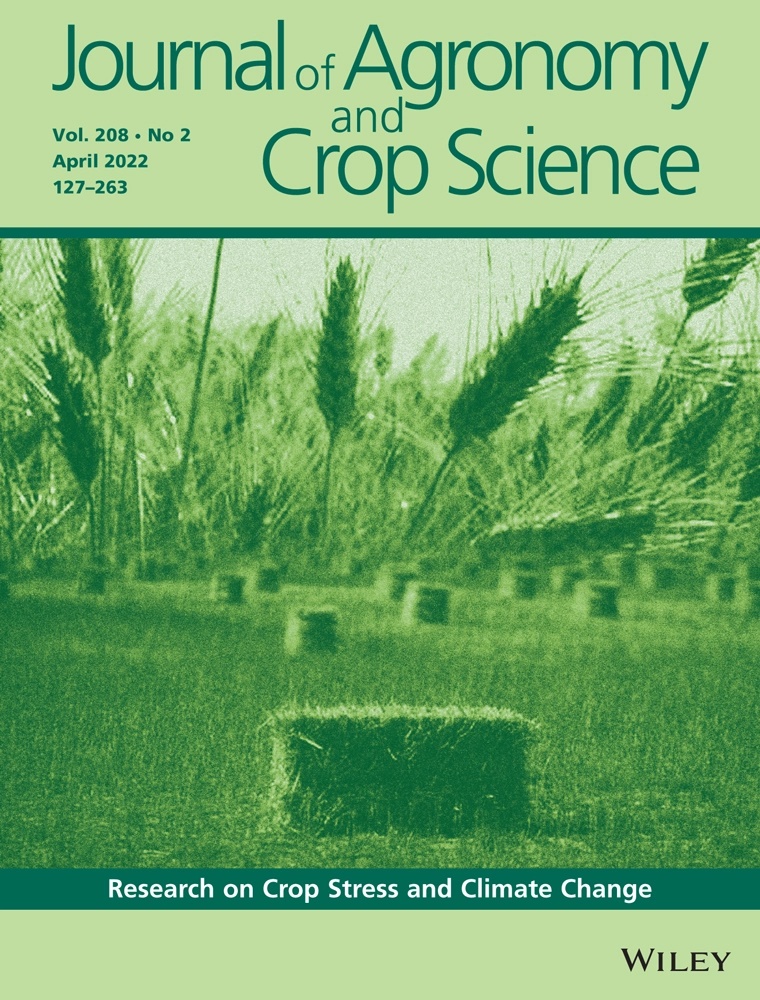Ver ítem
- xmlui.general.dspace_homeCentros e Institutos de InvestigaciónCIAP. Centro de Investigaciones AgropecuariasInstituto de Fisiología y Recursos Genéticos VegetalesArtículos científicosxmlui.ArtifactBrowser.ItemViewer.trail
- Inicio
- Centros e Institutos de Investigación
- CIAP. Centro de Investigaciones Agropecuarias
- Instituto de Fisiología y Recursos Genéticos Vegetales
- Artículos científicos
- Ver ítem
High night temperature during maize post-flowering increases night respiration and reduces photosynthesis, growth and kernel number
Resumen
In the last years globally, daily night-time low temperatures have increased more than twice compared with maximum temperatures. There is little evidence about maize growth and yield responses to high night temperature (HNT) under field conditions. In this study, we aimed to (i) evaluate the effect of HNT during post-flowering on kernel number (KN), crop growth rate expressed in chronological days and thermal units (CGRD and CGRTU, respectively),
[ver mas...]
In the last years globally, daily night-time low temperatures have increased more than twice compared with maximum temperatures. There is little evidence about maize growth and yield responses to high night temperature (HNT) under field conditions. In this study, we aimed to (i) evaluate the effect of HNT during post-flowering on kernel number (KN), crop growth rate expressed in chronological days and thermal units (CGRD and CGRTU, respectively), radiation use efficiency (RUE), night respiration (Rn), net photosynthesis (Amax), chlorophyll fluorescence and cell membrane stability (CMS), and (ii) identify associations among the measured physiological traits. Two hybrids (Te, temperate; and St, subtropical) were exposed to two thermal conditions from R1 + 2d to R1 + 16d: (i) HNT from 1900 to 0700 h, and (ii) ambient night temperature (ANT). The HNT resulted in reductions in KN (8%), CGRD (11%), and CGRTU (19%), with non-significant changes in kernel weight and grain yield. Reductions in KN were better explained by drops in CGRTU than in CGRD. Under HNT, Amax significantly decreased (p < 0.05; 17%, among experiments and hybrids) with insignificant changes in CMS and chlorophyll fluorescence. HNT caused a larger effect on Rn in Te (+40%) than in St. We found a strong negative relationship between Rn and Amax, indicating that high Rn might exhibit an indirect effect on Amax, altering carbon balance and growth.
[Cerrar]

Autor
Kettler, Belén Araceli;
Carrera, Constanza Soledad;
Nalli Sonzogni, Federico David;
Trachsel, Samuel;
Andrade, Fernando Hector;
Neiff, Nicolás;
Fuente
Journal of Agronomy and Crop Science (First published: 15 March 2022)
Fecha
2022-03-15
Editorial
Wiley
ISSN
0931-2250
1439-037X (online)
1439-037X (online)
Documentos Relacionados
Formato
pdf
Tipo de documento
artículo
Proyectos
(ver más)
INTA/2019-PD-E3-I060-001/2019-PD-E3-I060-001/AR./Adaptación de los cultivos al cambio climático: Bases ecofisiológicas para el manejo y la mejora genética
Palabras Claves
Derechos de acceso
Restringido
 Excepto donde se diga explicitamente, este item se publica bajo la siguiente descripción: Creative Commons Attribution-NonCommercial-ShareAlike 2.5 Unported (CC BY-NC-SA 2.5)
Excepto donde se diga explicitamente, este item se publica bajo la siguiente descripción: Creative Commons Attribution-NonCommercial-ShareAlike 2.5 Unported (CC BY-NC-SA 2.5)

